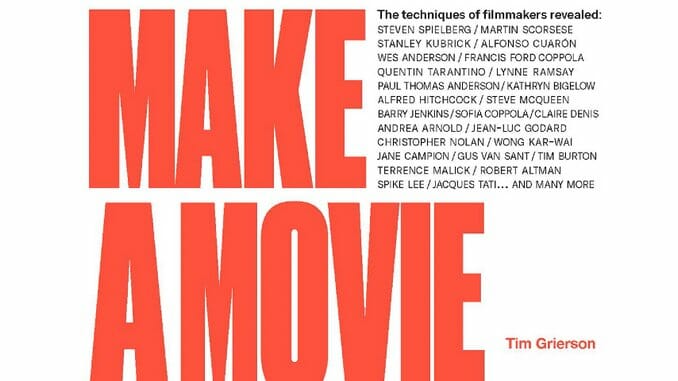This Is How You Make a Movie Breaks Down the Basics of Film Literacy

Being able to write about movies, talk about movies and—yes—make movies doesn’t always require a lot of traditional schooling. Its education is one often done by osmosis. Consuming films teaches you their language, like watching familiar TV in another tongue. You get a sense of the techniques and tropes, the working vocabulary of the form, with just your eyes. So it’s only fitting that This is How You Make a Movie, the new book from Paste contributor Tim Grierson, is filled with images. It’s effectively an extended glossary, somewhere between a film 101 course and a movie blog, offering to connect the dots between what you see and what’s done to create it through extensive examples. An informed appreciation of the craft always leads to better filmmaking. But the book’s scope—a generalist’s guide to discussing cinema as informed by some of the greats—particularly lends itself to those that love to talk film, whether or not they want to make their own.
To achieve this, Grierson pulls from both his own interviews and those of others where masters like Sofia Coppola, Julie Dash and Mike Leigh lend insight into their filmmaking choices—things like keeping a script’s ending vague, shooting with all-natural light or building characters with the actors themselves. Just skimming the thing will probably add a film or two to your watchlist. For me? Roy Andersson’s Songs from the Second Floor. Written in plain language and paired with evocative shots or behind-the-scenes stills—with three examples given for each identified element of filmmaking (which span from a director’s framing or shot length decisions to the match-cuts and transitions of editors)—the book holds your hand without talking down to you.
That’s partly why the book works best for the casual moviegoer looking to learn a bit more about the process and creation of films. For those who’ve gone through (or dropped out of) film school—or even started making movies on their own—there likely won’t be much new here aside from a few interview snippets or a technical term’s more standardized definition. Dissolves, wipes and fades are well-known to anyone that’s had to make a particularly flowery PowerPoint presentation, for example. The focal length, aperture size and lens needed to achieve a deep focus shot…well, that’s a little more specific. Achieving these specifics in practice would benefit better from on-the-job training, playing around with cameras and other ways of learning by doing. But once you understand and recognize them as intentional techniques—ones with meaning and purpose behind them—movies glow all the more.
It’s that very ability to identify and appreciate that This is How You Make a Movie fosters. Finishing the book probably won’t make you any more likely to go out with a camera and make a great movie now that you know what a split diopter shot entails. You’ll still be winging it to some extent, even if you now have the right words to describe the effect you’re chasing. But having those words and that context adds plenty of depth and color to those looking to either read or write more about movies. This is How You Make a Movie might very well be called This is How You Talk about Movies. The enhanced film literacy it preaches—written without pretension or assumption—will help the casual cinephile or blogger looking to add a little more legitimacy and authority to their musings, while acting as a cinematic Rosetta Stone to a world of more in-depth film writing.
-

-

-

-

-

-

-

-

-

-

-

-

-

-

-

-

-

-

-

-

-

-

-

-

-

-

-

-

-

-

-

-

-

-

-

-

-

-

-

-








































